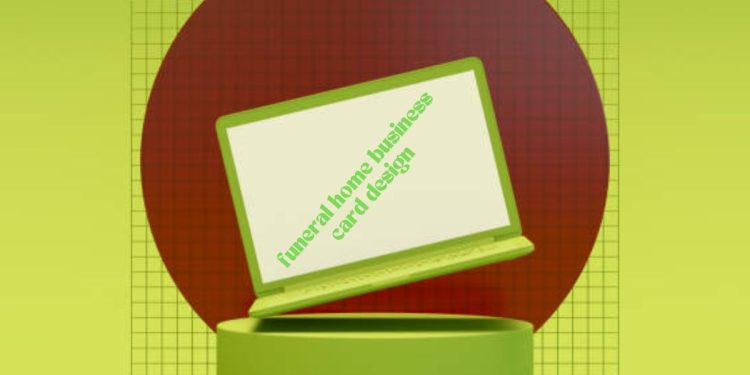Introduction
In an industry as sensitive and emotionally charged as funeral services, the way you present your business is crucial. A well-designed business card serves as a tangible reminder of your services and professionalism. It’s often the first impression potential clients will have, making it a critical component of your marketing strategy.
Understanding Your Brand
Before diving into the design process, it’s essential to have a clear understanding of your funeral home’s brand. Are you a traditional, family-owned business, or do you offer modern and eco-friendly services? Your business card should reflect your unique identity and convey the values that set you apart from competitors.
Key Elements of a Business Card
Must-Have Information
A business card should include fundamental details such as your name, title, business name, contact information, and website. It’s important to keep this information up-to-date and ensure it’s easy to read.
Importance of Simplicity
Simplicity is key when designing a business card. A cluttered card can be overpowering and difficult to read. Stick to the essentials and leave some blank space to make the card more visually appealing.
Design Principles for Funeral Home Business Cards
Appropriate Color Schemes
Colors evoke emotions, so choosing the right palette is crucial. Soft, muted colors like blues, greens, and earth tones are often associated with peace and tranquility. Avoid bright, flashy colors that may seem disrespectful or out of place.
Font Selection
Pick fonts that are clear and easy to read. Traditional serif fonts convey a sense of formality, while sans-serif fonts offer a more modern look. Avoid overly decorative fonts that may detract from the card’s readability.
Incorporating Imagery and Logos
Use of Symbols and Logos
Incorporate your logo or any relevant symbols that represent your brand. This can help with brand recognition and make your card more memorable.
Respectful Imagery Choices
Images should be chosen with care to ensure they are respectful and in line with the sensitive nature of the industry. Symbols like doves, flowers, or gentle landscapes can be appropriate.
Choosing the Right Material
Cardstock Options
The type of cardstock you choose can affect the perception of your business. Thicker cardstock tends to feel more luxurious and durable, while thinner options can be more economical.
Finishes: Matte vs. Glossy
A matte finish gives a more subdued, classic look, while a glossy finish can make colors pop but may seem less formal. Consider your brand’s personality when choosing a finish.
Size and Shape Considerations
Standard Dimensions
The common size for business cards is 3.5 x 2 inches. This size is practical and easy to carry in a wallet or cardholder.
Unique Shapes for Differentiation
To stand out, consider using a non-traditional shape or size. Rounded corners or vertical layouts can make your card more memorable, but ensure they remain practical and professional.
Printing Techniques
Digital vs. Offset Printing
Digital printing is cost-effective for small quantities and quick turnarounds, while offset printing offers higher quality and is more cost-effective for larger runs.
Special Printing Effects
Consider using special effects like embossing, foil stamping, or spot UV coating to add a touch of elegance and make your card stand out.
Creating a Memorable Tagline
A well-crafted tagline can communicate your business’s values and mission. Keep it short, impactful, and reflective of your brand’s ethos.
Legal and Ethical Considerations
Ensure your business card complies with industry standards and regulations. Avoid making false claims or promises, and respect the privacy of your clients.
Utilizing QR Codes and Digital Elements
Incorporating a QR code on your business card can bridge the gap between traditional and digital marketing. It allows recipients to quickly access your website or online services with a simple scan.
Distribution Strategies
Think about where and how you will distribute your business cards. Consider leaving them at local businesses, community centers, or partnering with related services like florists and caterers to reach potential clients.
Measuring Effectiveness
Track the success of your business cards by monitoring how new clients heard about your services. This can help you assess the impact of your design and distribution strategies.
Common Mistakes to Avoid
Avoid common pitfalls such as overcrowding your card with information, using hard-to-read fonts, or choosing inappropriate colors. Make sure all contact details are accurate and that the card reflects your brand accurately.
Conclusion
A thoughtfully designed business card is more than just a piece of paper; it’s a powerful tool for making a lasting impression. By carefully considering design elements, materials, and distribution strategies, you can create a business card that effectively represents your funeral home and resonates with potential clients.
Also Read About: internetchicks
FAQs
1. What information should I include on my funeral home business card?
Include your name, title, business name, phone number, email address, and website. A tagline and logo are also helpful for branding.
2. How might I make my business card stand out?
Consider using unique shapes, special printing effects, or high-quality materials to differentiate your card. Ensure the design reflects your brand’s identity.
3. What tones are appropriate for a funeral home business card?
Soft, muted colors like blues, greens, and earth tones are generally appropriate. Avoid bright, flashy colors that may seem disrespectful.
4. Should I include a QR code on my business card?
Including a QR code can be beneficial, allowing recipients to quickly access your website or online services. Ensure it’s discreet and doesn’t clutter the design.
5. How can I ensure my business card is effective?
Keep the design simple, professional, and reflective of your brand. Track new client inquiries to measure the card’s impact and adjust your strategy as needed.funeral home business card design.
Also Read About: digitalnewsalerts






